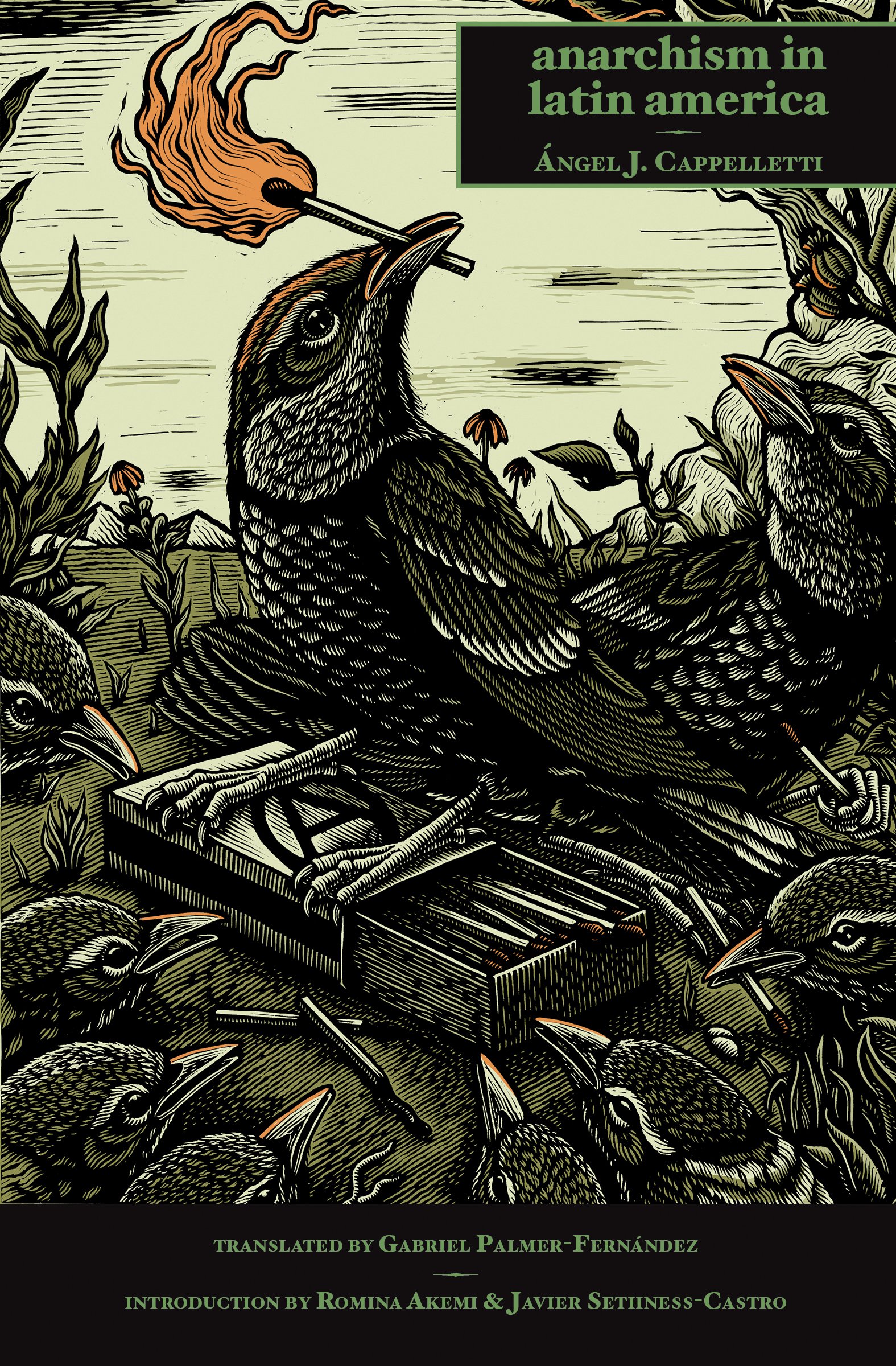by BENJAMIN DANGL

Book Review: Anarchism in Latin America by Ángel Cappelletti. Translated by Gabriel Palmer-Fernández. Published by AK Press, 2018.
Ángel Cappelletti (1927-1995) was an Argentine philosopher who spent much of his career teaching at Simón Bolívar University in Venezuela. He also translated numerous works from Greek and Latin, and wrote over two dozen books, primarily on philosophy and anarchism. One of his later books is the classic survey Anarchism in Latin America, now available for the first time in English from AK Press.
The book provides a panoramic view of anarchism across fourteen countries in the region, from general strikes in Chilean ports to worker-theorists in Cuban tobacco factories. Cappelletti’s expansive overview offers a rich window into nearly one hundred years of anarchist organizing and agitating, starting in the 1860s when “anarchism took root in a number of activist groups” to the mid-twentieth century.
“This work does not pretend to be a comprehensive history of Latin American anarchism but simply a sketch of it,” Cappelletti writes. Indeed, one of the strengths of this book is its breadth. Not only does it have understandably hefty chapters on Argentina and Mexico, but it points to lesser known corners of the continent where Paraguayan anarchists struggled for the eight-hour work day, and a self-managed community flourished in Montevideo. Cappelletti’s far-ranging work is also an encyclopedia of primary sources; manifestos, pamphlets, petitions, and speeches lost to the dustbin of history are gathered and cited here extensively, helpfully amplifying the voices of these anarchist thinkers and writers, and providing a reference guide for researchers.
Above all, Anarchism in Latin America deals with anarchists’ visions, strategies, and struggles, from the smaller uprisings snuffed out by dictatorships to the momentous Mexican Revolution. As Cappelletti writes, “anarchism in Latin America has an ample history rich in struggles peaceful and violent; in demonstrations of individual and collective heroism; in organizational efforts; in oral, written, and practical propaganda; in literary works; and in theatrical, pedagogical, cooperative, and communitarian experiments.” And it’s all here, in an eloquent English translation by Gabriel Palmer-Fernández and with a helpful and rich new introduction by Romina Akemi and Javier Sethness-Castro.
Cappelletti takes us to the port city of Callao, Peru in January of 1913, when dockworkers were joined by “typesetters, bakers, steelworkers, millers, and gas fitters” in a general strike for an eight-hour work day, higher wages, and medical support for victims of accidents on the job. The government threatened to bring out the machine guns, but the workers’ solidarity spread far and fast, forcing the port and dock business owners to bow to the strikers’ demands. Anarchist groups, “almost the sole promoters of these struggles,” Cappelletti writes, marched through the streets “with an indescribable enthusiasm, carrying the red flag.” Direct action and general strikes spread, and by 1919 the movement had won the eight-hour work day nationwide.
Toward Freedom for more